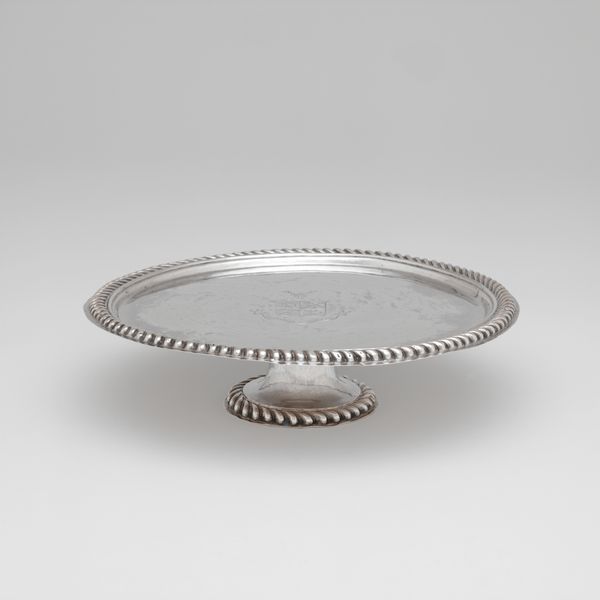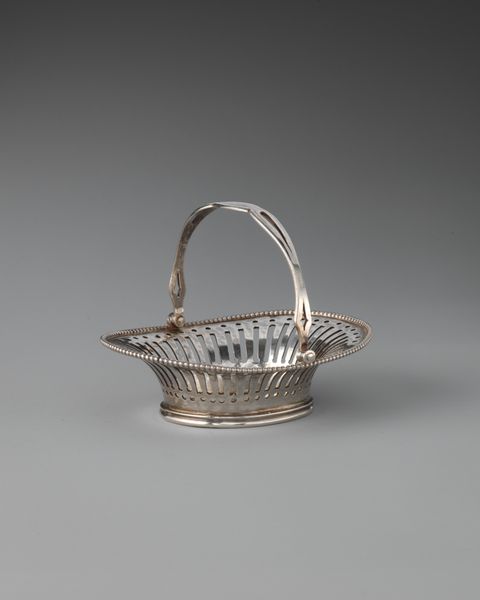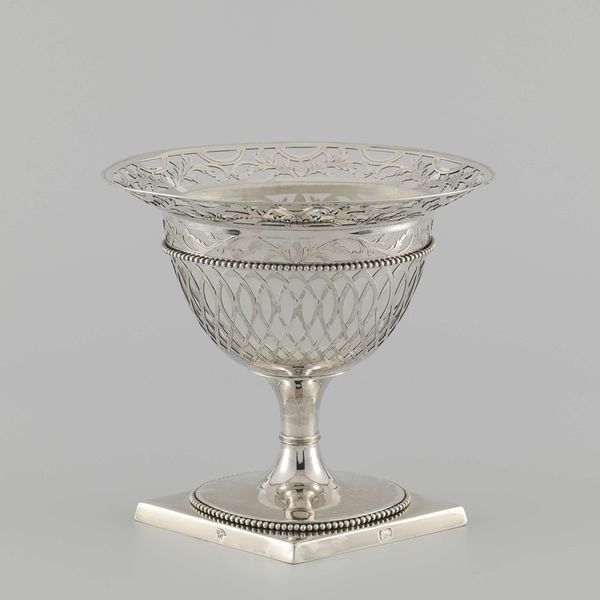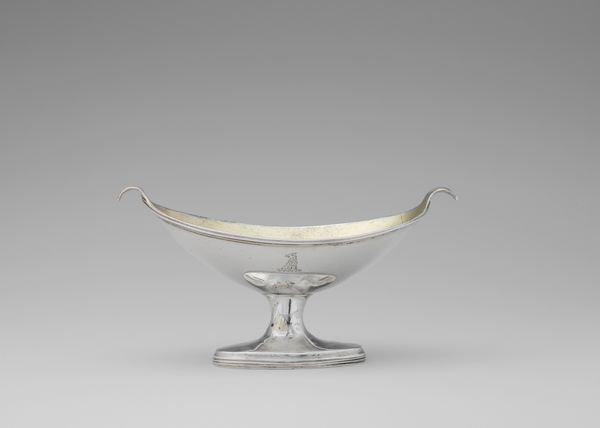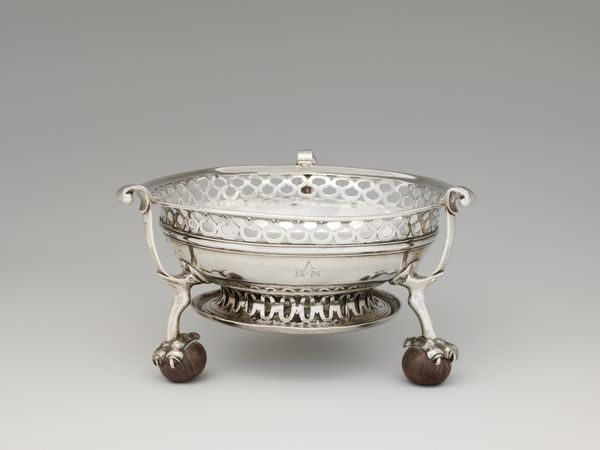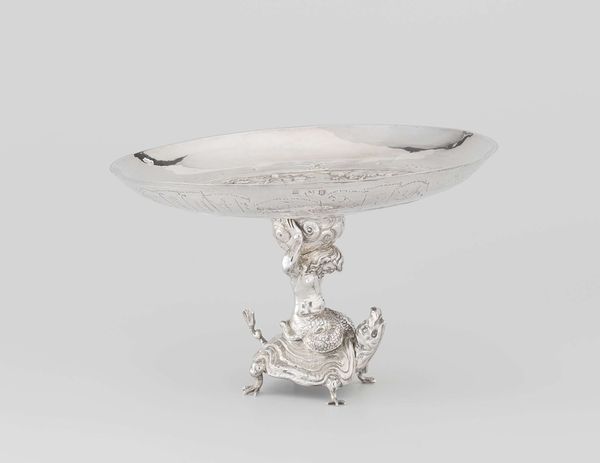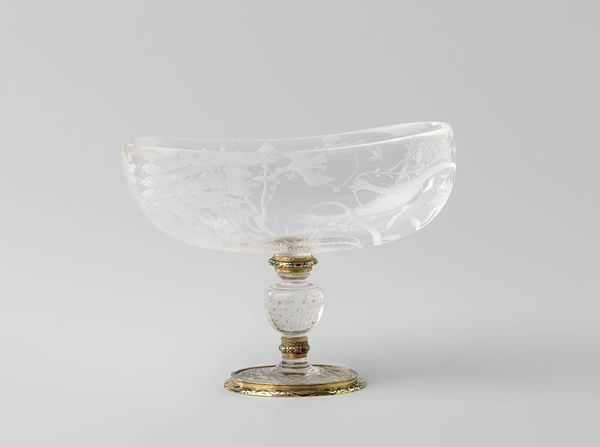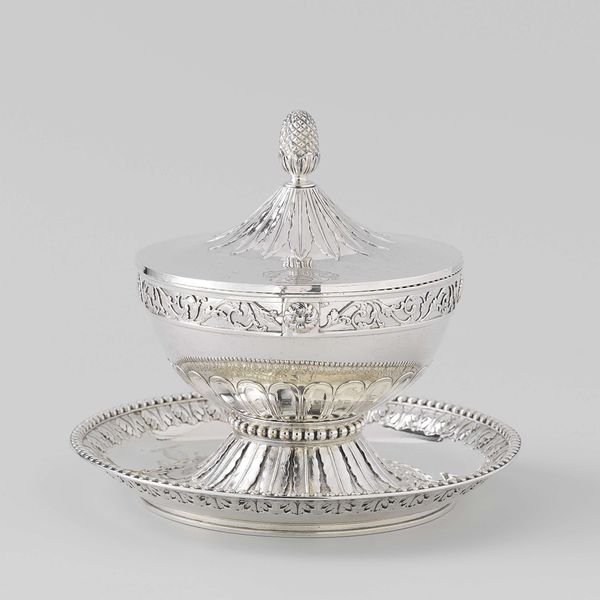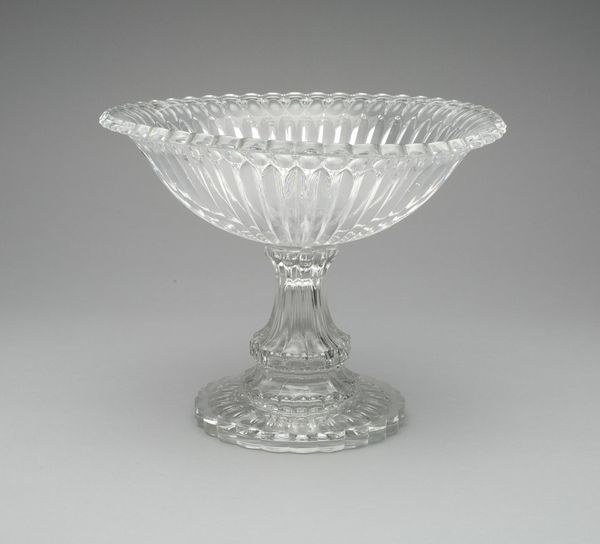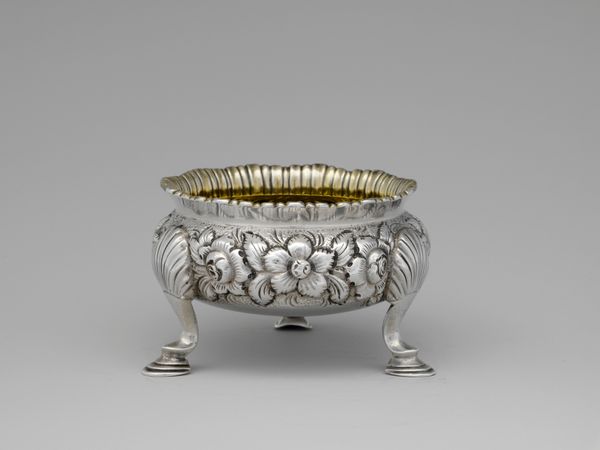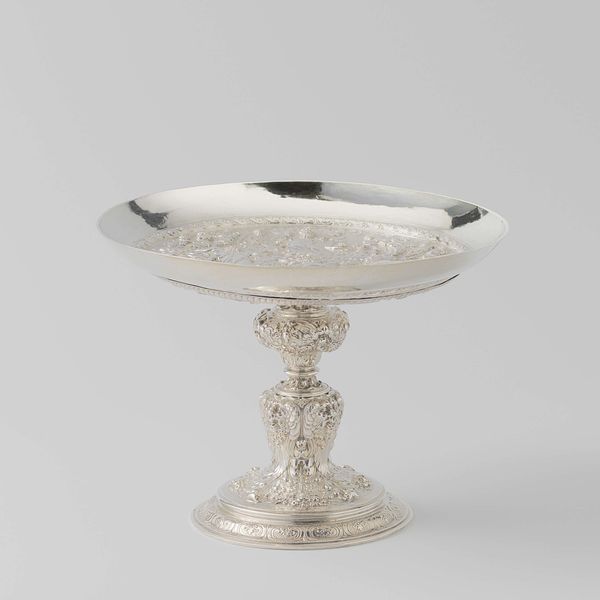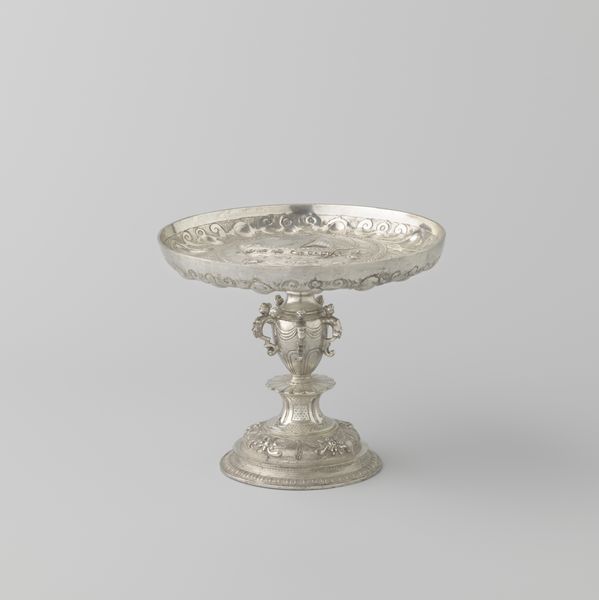
silver, metal
silver
metal
united-states
decorative-art
Dimensions: Overall: 2 3/16 x 4 1/4 x 3 1/8 in. (5.6 x 10.8 x 7.9 cm); 4 oz. 15 dwt. (147.6 g) Stand: H. 2 1/8 in. (5.4 cm); 2 oz. 18 dwt. (89.9 g) Dish: H. 1 5/16 in. (3.3 cm); 1 oz. 17 dwt. (57.7 g)
Copyright: Public Domain
Crafted in the mid-19th century by Samuel Kirk and Son, this silver salt cellar presents us with symbols of refinement and status. Note the delicate frieze around the rim. These stylized leaf-like shapes, seen in ancient Greek and Roman art, represented growth, life, and prosperity. However, the seemingly simple act of presenting salt carries a deeper resonance. Salt, a precious commodity throughout history, symbolized incorruptibility and preservation. Think of the phrase "worth your salt," linking value to service, a concept stretching back to Roman times when soldiers were paid in salt. In Leonardo da Vinci's "The Last Supper," an overturned salt cellar is placed near Judas, foreshadowing betrayal and misfortune. The symbolic weight of salt has shifted over time, from purity and value to omens of ill fate, illustrating how cultural memory and the psychological weight of symbols evolve across centuries. The memory of symbols, like echoes in a hall of mirrors, reverberates through time.
Comments
No comments
Be the first to comment and join the conversation on the ultimate creative platform.
